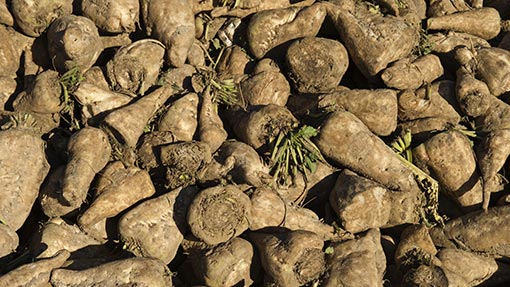Efficiency improvements on arable farm see broad benefits

A precision approach at Newcome-Baker Farms, near Hunstanton, Norfolk, has brought multiple benefits.
Efficiency improvements have been seen in cost saving and accuracy, while operator fatigue has been reduced.
William Barber has spent about £40,000 over the past three years on a mast, three systems and a steering system for his 1,400ha operation, which is split roughly equally between his own and contract-farmed land. One of the systems – a retrofit Topcon satellite steering system and an RTK mast shared with a neighbour – was bought in spring 2012 with the help of a Farming and Forestry Improvement Scheme grant. This contributed 40% towards the £25,000 cost of the mast and system (see right).
“We have bought a second Topcon system on a Fendt and have an older Greenstar system from when we had John Deeres, which we can move to a number of other pieces of equipment, as it is compatible with a motorised steering wheel that we leave permanently on other machines such as the combine, crawler and tractor.”
FFIS grants
- Available to all English farming businesses to improve efficiency
- About £10m on offer from 4 February to 4 April 2014
- Offers up to 40% of eligible costs in England’s non-upland areas, where less than 50% of the land is within a Severely Disadvantaged Area (SDA)
- Offers up to 50% of eligible costs for hill farming businesses in upland areas (where 50% or more of the land is within an SDA, or forestry/contracting businesses based within an SDA)
- Maximum grant – £35,000 a farm business
- Minimum grant £2,500 – equates to minimum eligible costs of £6,250 where the 40% rate applies (£5,000 where the 50% rate applies)
- More information online or telephone 0300 060 4761
Sugar beet drilling was the starting point. “Having seen how easy it was to use for beet drilling, we progressed to using it on the corn-drilling tractor, then on to cultivations, the combine (even though it has a laser pilot), and now we use it for variable rate spreading as well.”
The physical and financial performance is difficult to quantify but definitely there, says Mr Barber. “We have reduced overlaps and double working of the land and there are obvious benefits in fuel, tyre wear, time and implement wear.
“When it comes to variable-rate spreading (for P, K and Mg fertiliser) the bills do not seem hugely less in terms of cost of fertiliser but we are definitely spreading smarter, as we seem to have more even crops in terms of yield and establishment.
“The operators are less tired after a day of combining and precision drilling, and have more time to concentrate on what they are actually doing rather than spending all their time on just driving straight.
“As with anything new, it all looks a bit confusing to start with but very soon becomes second nature. To be honest it is a bit of an age thing, because undoubtedly our younger member of the team not only picks it up quicker but is less frightened of it and more likely to explore what it can do.”
Variable-rate nitrogen spreading is being considered, possibly followed by variable-rate seed drilling. For anyone else thinking about embarking on a precision approach, Mr Barber advises carefully working out what you want from the system.
“Do you just want to drive straight or do you want the other elements such as variable rate spreading, linking tractors and so on? There can be significant cost savings on simpler systems.
“Some companies are more advanced – speak to farmers using different systems to understand any limitations. Sometimes you can get around these but it’s not ideal.
“It is also important to check your signal coverage and check the annual costs if you are relying on a national signal.”
What precision kit qualifies for FFIS grant?
Nutrient management
- Manure analysis equipment at farm level
- Soil mapping and soil analysis software
- GPS equipment for precision farming, including base stations (where this will also benefit other farmers), auto-steer systems, controllers fitted to tractor to link GPS signal to application equipment, including actuators to operate sections of the application equipment or vary rate of application (limited to purchase and installation of GPS system to one tractor per business in current round)
- Slurry application equipment
Animal health and welfare
- Sheep weigh crates with electronic weighing system linked to EID system
- Automatic shedding/drafting gate linked to EID system and electronic weighing system
- Sheep weigh crates with electronic segregation system
- EID readers (handheld or panel)
- Electronic weigh cells for cattle crushes
- Automatic shedding/drafting gate linked to EID system and electronic weighing system
- Heat-detection systems based on motion detectors (collar or pedometer based)
- Electronic weigh cells (pigs)
- Computer software to help monitor animal health (pigs and poultry)
Energy efficiency
- Computer software specifically aimed at assisting energy efficiency
Water management
- Water consumption monitoring kit – water meters and data-logging devices

